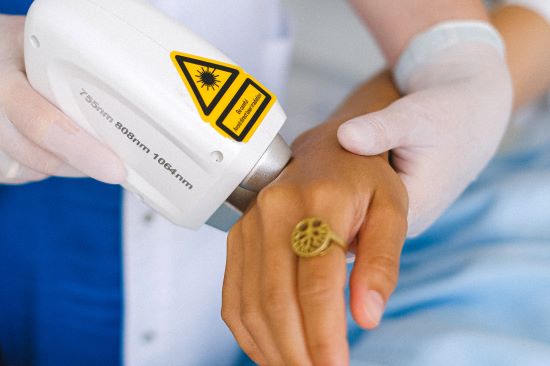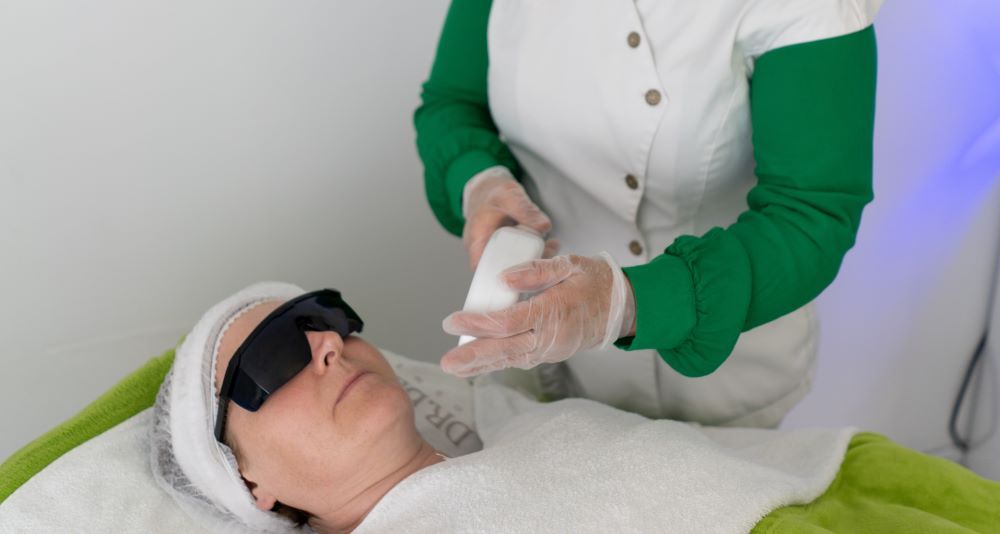Laser Hair Removal for Ingrown Hairs
Ingrown hairs are a common problem for people who shave or wax regularly. They occur when hair follicles become clogged with dead skin cells, causing hair to grow back into the skin instead of outward. Ingrown hairs can be unsightly and painful, but fortunately, there are many ways to treat them. One effective treatment is laser hair removal.
We will explore the benefits and risks of laser hair removal for ingrown hairs, as well as what to expect during the procedure and recovery process.
What is Laser Hair Removal?
Laser hair removal is a cosmetic procedure that uses concentrated beams of light to remove unwanted hair from the body. The light is absorbed by the pigment in the hair, which heats up and destroys the hair follicle, preventing future hair growth. Laser hair removal can be used on almost any part of the body, including the face, arms, legs, underarms, and bikini area.
How Does Laser Hair Removal Help with Ingrown Hairs?
Laser hair removal can help prevent ingrown hairs by destroying the hair follicles that cause them. When the hair follicle is destroyed, hair growth is inhibited, which means there is less chance of hair growing back into the skin. Over time, laser hair removal can reduce the number of ingrown hairs a person experiences, resulting in smoother, clearer skin.
Benefits of Laser Hair Removal for Ingrown Hairs
1. Permanent Hair Reduction:
Laser hair removal offers a long-term solution to ingrown hairs. Unlike shaving or waxing, which only provide temporary results, laser hair removal permanently reduces hair growth in the treated area. This means that over time, there will be less hair to cause ingrown hairs.
2. Precise Targeting:
Laser hair removal can target specific areas of the body, such as the bikini line or underarms, where ingrown hairs are most common. By targeting these areas, laser hair removal can effectively reduce the number of ingrown hairs in those areas.
3. Minimal Side Effects:
Laser hair removal is a relatively safe procedure with minimal side effects. Some people may experience mild redness or swelling in the treated area, but these side effects usually subside within a few hours.
Risks of Laser Hair Removal for Ingrown Hairs
1. Skin Irritation:
Laser hair removal can irritate the skin, especially if the skin is sensitive. This can cause redness, swelling, and discomfort in the treated area. In some cases, the skin may develop blisters or scarring.
2. Pigmentation Changes:
Laser hair removal can cause changes in skin pigmentation, especially in people with darker skin tones. This can result in areas of hyperpigmentation (darkening of the skin) or hypopigmentation (lightening of the skin).
3. Infection:
Although rare, there is a risk of infection with laser hair removal. This can occur if bacteria enter the skin through small openings created by the laser.
Preparing for Laser Hair Removal
Before undergoing laser hair removal, it’s important to prepare properly to ensure the best possible results. Here are a few tips to help you prepare for your procedure:
1. Avoid Sun Exposure:
Sun exposure can make the skin more sensitive and increase the risk of skin damage during the laser hair removal procedure. It’s important to avoid sun exposure for at least two weeks before the procedure.
2. Avoid Waxing or Plucking:
Waxing or plucking can disturb the hair follicle, making it more difficult for the laser to target the hair. It’s important to avoid waxing or plucking for at least four weeks before the procedure.
3. Shave the Treatment Area:
It’s important to shave the treatment area a day or two before the procedure to ensure that the laser can effectively target the hair follicles. However, it’s important not to shave too closely to the skin, as this can increase the risk of skin irritation.
4. Avoid Certain Medications:
Some medications, such as antibiotics and blood thinners, can increase the risk of complications during the procedure. It’s important to let your doctor know about any medications you are taking before undergoing laser hair removal.
During the Laser Hair Removal Procedure
During the laser hair removal procedure, the technician will use a handheld device to deliver concentrated beams of light to the treatment area. The length of the procedure will depend on the size of the area being treated, but typically lasts between 15 minutes and an hour.
Most people experience some discomfort during the procedure, which is often described as a mild stinging or prickling sensation. To help alleviate discomfort, the technician may apply a topical anesthetic to the treatment area.
After the Laser Hair Removal Procedure
After the laser hair removal procedure, it’s important to take good care of the treated area to ensure proper healing. Here are a few tips to help you recover:
1. Avoid Sun Exposure:
Sun exposure can increase the risk of skin damage and pigmentation changes. It’s important to avoid sun exposure for at least two weeks after the procedure.
2. Avoid Hot Baths and Showers:
Hot baths and showers can irritate the skin and increase the risk of infection. It’s important to avoid hot baths and showers for at least 24 hours after the procedure.
3. Apply Ice Packs:
Applying ice packs to the treated area can help reduce swelling and discomfort.
4. Moisturize the Skin:
Keeping the skin moisturized can help prevent dryness and irritation.
Read our article What Is Laser Hair Removal and Is it Painful?

